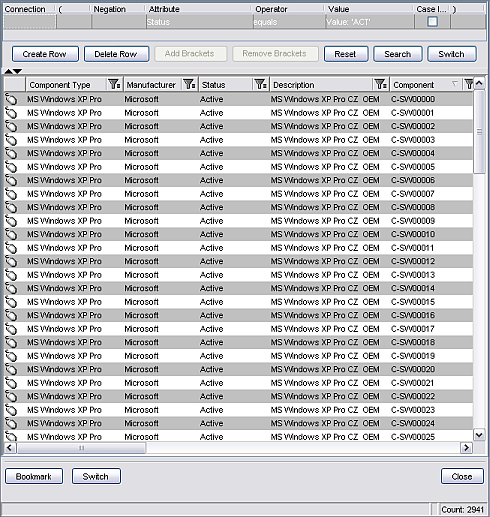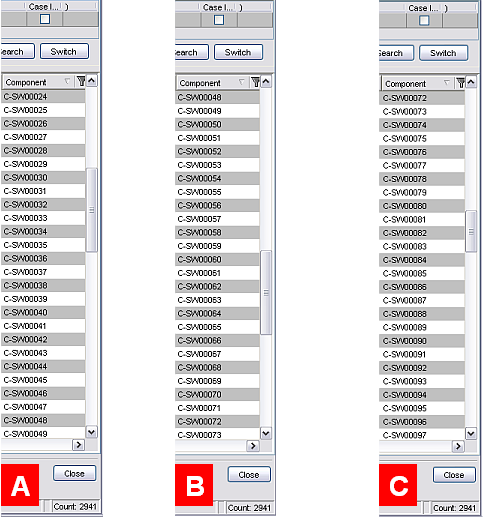Catalog in Table View
Let's have a catalog of Components based on a database table containing 100000 objects.
Let's specify a search condition: Status = Active and press Search.
The objects have been filtered (reducing the total number of objects to 2941) and in the database sorted and the first "batch" of objects has been read. All of the objects read may be browsed using the vertical scroll bar (or Prev / Next buttons when using the web client) . Let's look at the scroll bar behaviour and explain in simple terms what is going on "behind the scenes".
For a more in-depth explanation of the process and its settings, see How It Works and Limit Settings.
When the first batch of objects mentioned above is read, the catalog and its vertical scroll bar look like this:

Scrolling down displays more of the objects read in the first batch (see image below: A,B) until the bottom of the scroll bar is reached. At this point all of the objects have been browsed. The application assumes we need to see more and reads another "batch" of objects adding it to the previous ones. As a result, the length of the scroll bar slider is reduced proportionally to signify the fact that there are now more objects ready to be browsed (see image below: C). This process can be repeated many times.
The same above described behaviour applies to scrolling upward.

Object Count
The Count field found in the catalog status bar always displays the "real" and "current" number of objects belonging to the catalog and/or matching the search condition. This means:
- The number is "real"
Regardless of how many objects are currently visible and how many objects have been read to memory, the count displays all suitable objects existing in the database. Also, if some objects in the catalog have been hidden (using the Hide function in the catalog right-click context menu), the count still returns the real number of objects matching the catalog condition.
- The number is "current"
The result of operations made in the catalog (object creation or deletion) is immediately reflected in the count.
Note: Whenever we refer to using the scroll bar, alternative means of scrolling such as using the arrow or PageUp/PageDown keys can also be used.